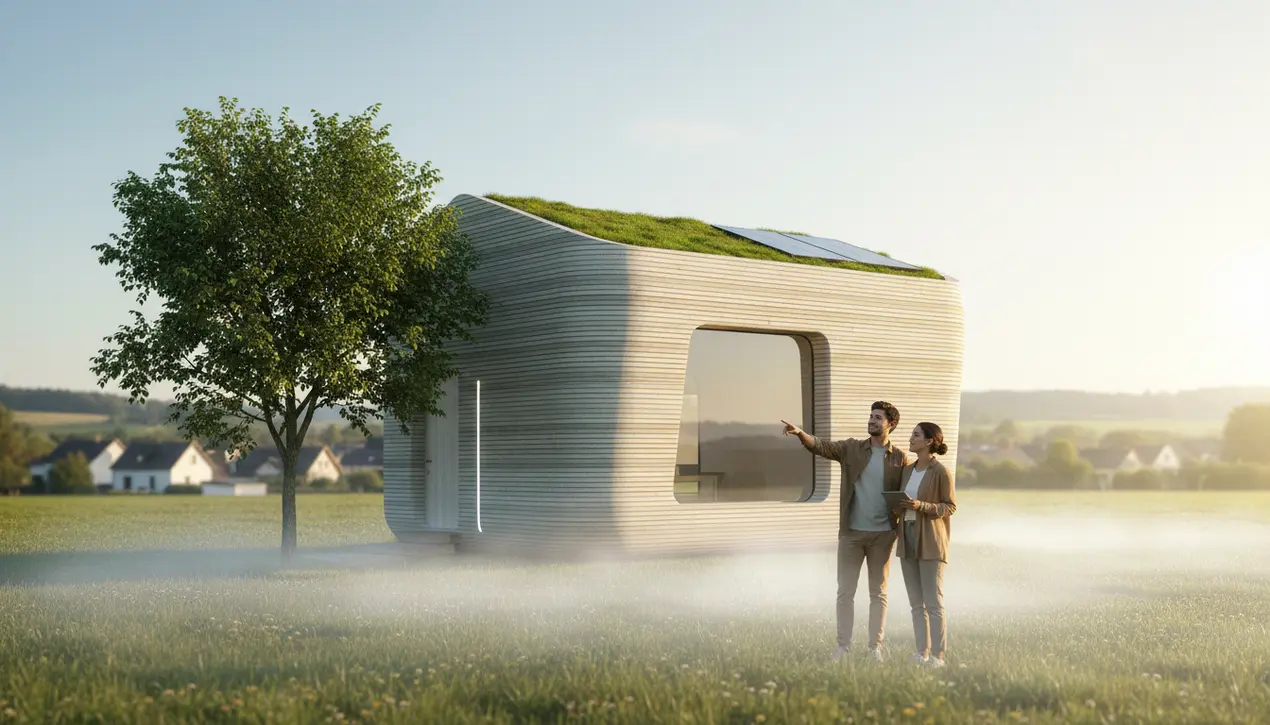
Scienceclimate scienceSustainable Development
Luxembourg's First 3D-Printed Home Offers Eco-Friendly Housing Solution.
RA
Rachel Adams
2 days ago7 min read3 comments
In a quiet corner of Luxembourg, a revolution in sustainable living is taking root, not with grand gestures, but with the quiet, precise hum of a 3D printer. The completion of Tiny House LUX, the nation's first 3D-printed home, represents far more than a technological novelty; it is a profound statement in the face of a dual crisis gripping not only the Grand Duchy but the entire continent—the relentless squeeze of housing unaffordability and the escalating urgency of the climate emergency.This compact dwelling, a brainchild of visionary architects and engineers, embodies a new architectural philosophy where smart design and sustainable technology are inextricably fused. The very process of construction, layer by additive layer, drastically reduces material waste compared to traditional methods, a critical consideration when the construction industry globally is a notorious contributor to landfill overflow and carbon emissions.The bio-based, often locally sourced concrete mixtures used not only lower the carbon footprint from transportation but also offer superior thermal mass, meaning the home naturally retains heat in winter and stays cool in summer, slashing energy demands for heating and cooling. This is a home that breathes with its environment, rather than fighting against it.The implications for Luxembourg, a country with some of the highest real estate prices in Europe and a pressing need to build denser, greener urban spaces, are immense. Imagine a future where such homes can be printed rapidly to provide dignified, eco-conscious housing for key workers, young families, or those displaced by economic pressures, all while adhering to the strictest environmental standards.The project echoes a growing, global movement seen from the Netherlands to California, where communities are turning to additive manufacturing to create resilient, affordable shelters. Yet, the path forward is not without its hurdles.Regulatory frameworks, often slow to adapt to disruptive innovation, must evolve to certify the long-term durability and safety of these structures. Public perception must shift from seeing 3D-printing as a gimmick to recognizing it as a viable, mainstream construction method.The success of Tiny House LUX serves as a vital pilot, a living laboratory whose performance data on energy consumption, structural integrity, and livability will be scrutinized by policymakers, environmentalists, and urban planners alike. It stands as a tangible, hopeful alternative to the resource-intensive sprawl of the 20th century, a prototype for a more harmonious relationship between human habitat and the natural world we are so desperately trying to preserve.
#3D printing
#sustainable architecture
#affordable housing
#Tiny House LUX
#eco-friendly construction
#lead focus news
Stay Informed. Act Smarter.
Get weekly highlights, major headlines, and expert insights — then put your knowledge to work in our live prediction markets.
Comments
Loading comments...
© 2025 Outpoll Service LTD. All rights reserved.